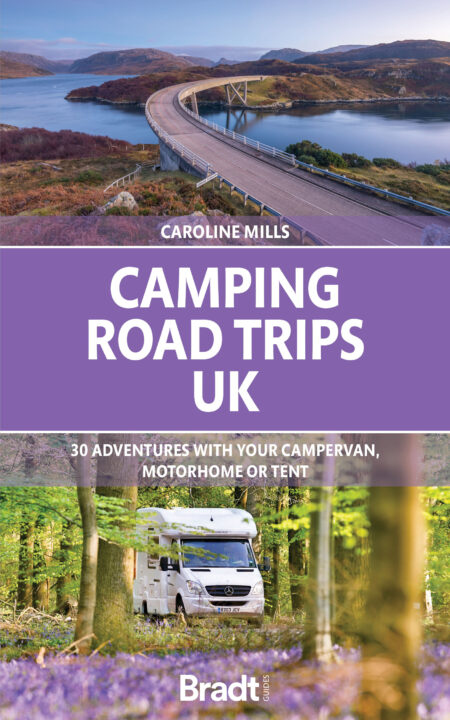‘Cllimbing up on Solsbury Hill,’ it’s not musician Peter Gabriel’s city lights that I can see. Rather the city of Bath bathed in early morning sunlight close to the finger valleys of the southern Cotswolds. As skylarks sing above the hilltop fort, views along the Limpley Stoke Valley to the south, the By Brook Valley to the east and the gnarled undulations supporting St Catherine’s Brook to the north appear infinitely long. The roar of traffic along the A46, bringing commuters into Bath, cannot be heard above the tuneful clamour of the skylarks as I examine the western skyline and the Cotswold escarpment northwest of the World Heritage city. ‘I was feeling part of the scenery.’
Having grown up in and been a lifelong resident of the north Cotswolds, I’ve become accustomed to the coachloads of tourists that step off for a quick selfie in Bourton-on-the-Water, Stow-on-the-Wold and Moreton-in-Marsh. And for many people, it’s these oh-so-pretty Gloucestershire towns of golden stone and the surrounding villages that are anticipated as ‘The Cotswolds’.
Yet overall, the Cotswolds is a much larger region than this triptych of hyphenated beauties. Indeed, the Cotswolds is, in part, defined as an Area of Outstanding Natural Beauty (the AONB management board is aiming to make it Britain’s newest national park, too). It covers some 787 square miles, swallowing up the bulk of the Cotswold escarpment and hills further east.
It can come as a surprise, therefore, that Wiltshire and even the odd fragment of Somerset also dip into the Cotswolds. It’s here that I venture in search of the attributes deemed to make the Cotswolds unique: the vernacular architecture created with oolitic limestone; the 4,000 miles of drystone walls (longer than the Great Wall of China); the ancient woodland and unimproved grassland; and archaeological sites and specific settlements associated with the area’s longstanding wool and textile trade.
The route
Malmesbury
I begin my tour in Malmesbury, a gateway town on the fringes of the AONB that has a fraction of the tourists of its northern counterparts and is all the prettier for it. The vernacular architecture is here – ribbons of Cotswold stone cottages that 200 years ago housed millworkers producing silk in the neighbouring mill beside the River Avon. But these pretty, terraced slopes are insignificant by comparison to the dominant building of the town – Malmesbury Abbey.
The hilltop abbey is only a third of its original size. Bits of masonry, including a tower once taller than that of Salisbury Cathedral, have dropped off over the centuries and never been replaced. The once-resplendent stone monks in the elaborate doorway have become faceless as they succumb to the Cotswold weather. But one Malmesbury monk, Eilmer, is written into the history books for his 11th-century stunt.
Inspired by the jackdaws that roosted in the abbey, Brother Eilmer strapped wings to his limbs and ‘flew’ from one of the abbey towers. The unsuccessful attempt led to the ‘Flying Monk’ being banned by his abbot from making a second attempt and, instead, became a distinguished scholar. It’s the Abbey’s magnificent decorative manuscripts, for which it gained a European reputation, that are on display today.
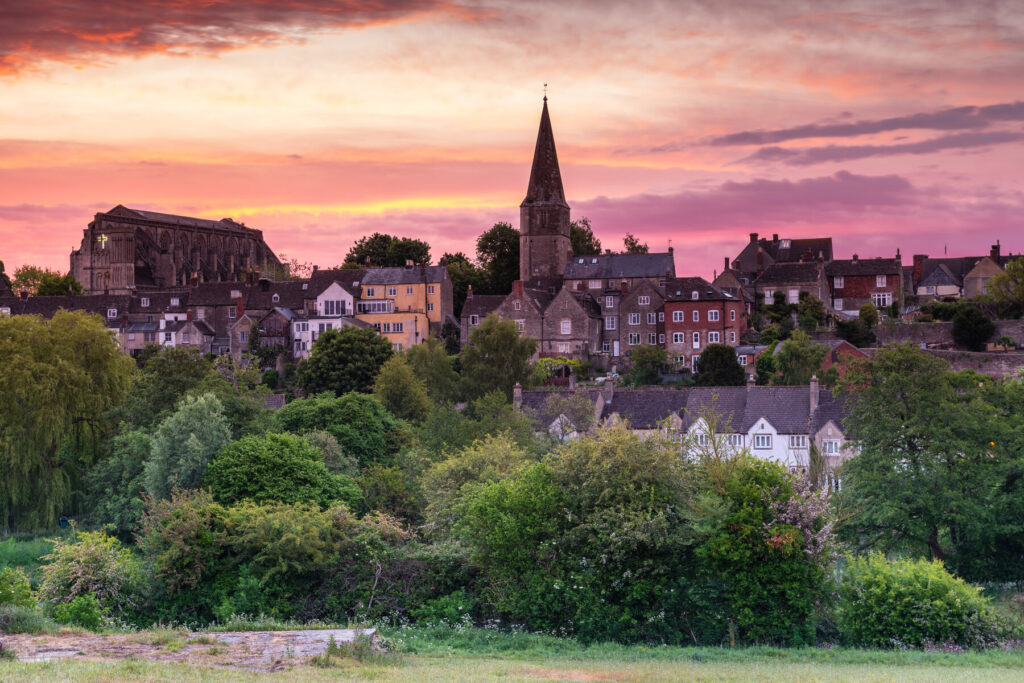
One of the best places from which to view the Abbey is the neighbouring Abbey House Manor. Considered some of the finest gardens in the world, there is year-round interest and when I visit in early summer, swathes of tulips mingle with topiary in the knot garden in front of the manor, while wooded slopes leading down to the River Avon at the rear provide a tranquil setting upon which to dawdle. The gardens are being reimagined over the next few years; hence, work may well be taking place in certain areas of the garden on a visit.
Malmesbury is also a foodie town. The High Street is filled with window seats aplenty upon which to ponder over a panini or delve into a vat of coffee. The Summer Café, a tiny deli-style eatery on the High Street, is my choice. But there are bistros, gastro pubs, cosy wine bars, numerous cafés and, when buying for eats back in the ‘van, a traditional butcher’s shop and bakery.
By evening, I take a stroll through the water meadows along the Avon, from where there are gratifying views of the town. It’s possible to make a circular tour that takes in many of the old town streets.
Castle Combe
I move on to Castle Combe, 11 miles south of Malmesbury. Not so much a hidden secret as a Cotswold treasure, the view from the bridge across By Brook in Castle Combe is one of the most photographed in the Cotswolds.
Superlatives and ‘chocolate box’ have long been used up to describe the village, which, as its name tells, is situated within a steep-sided, wooded valley. But, once pictures of this preposterously pretty village have been taken, the tearoom has been frequented, you’ve oohed-and-aahed at the complimentary combination of dwellings and had lunch in the Castle Inn overlooking the old Market Square, take a wander along the public footpath to the west of the inn.
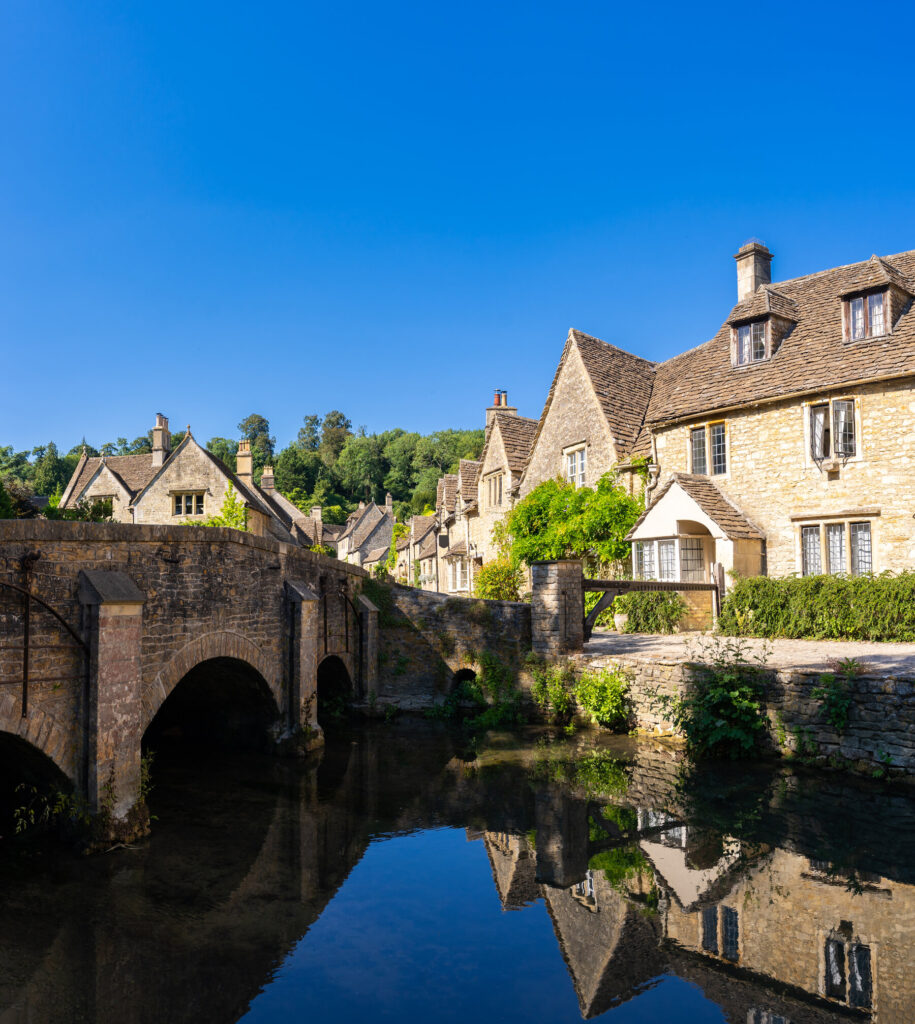
Along a sunken lane, visitors pass by yards of Cotswold drystone wall, sinking beneath a sea of ivy, to arrive in the middle of the Manor House Hotel Golf Course. There one can appreciate, still on the public footpath, the prettiness of the ‘hidden’ valley without the hordes of tourists in the village. It’s possible to either reverse the route or continue a very attractive circular walk that brings walkers back to the village along the southern aspect of the combe.
Biddestone and Corsham
A hefty shower of rain forces me back to the ‘van but I arrive in nearby Biddestone as the sun re-emerges. One of the most sought-after Wiltshire villages in which to live, Biddestone has everything that more-frequented Cotswold villages have – except the crowds. Sat beside the village pond, with a flotilla of baby moorhens, coots and ducklings for company, I find it a pleasant way to spend a lunch break. It affords time to enjoy this desirable village with its broad village green and agreeable houses.
Leaving the village ducks to their afternoon snooze, beak-under-wing, I move on for a brisk walk around another of the Cotswolds’ unsung market towns, Corsham. On the fringe of the AONB, like Malmesbury, Corsham also has the attributes that make a handsome Cotswold town without the well-worn path of umbrella-led tourists. I aim straight for Corsham Park, the landscaped parkland that accompanies the decoratively embellished Corsham Court.
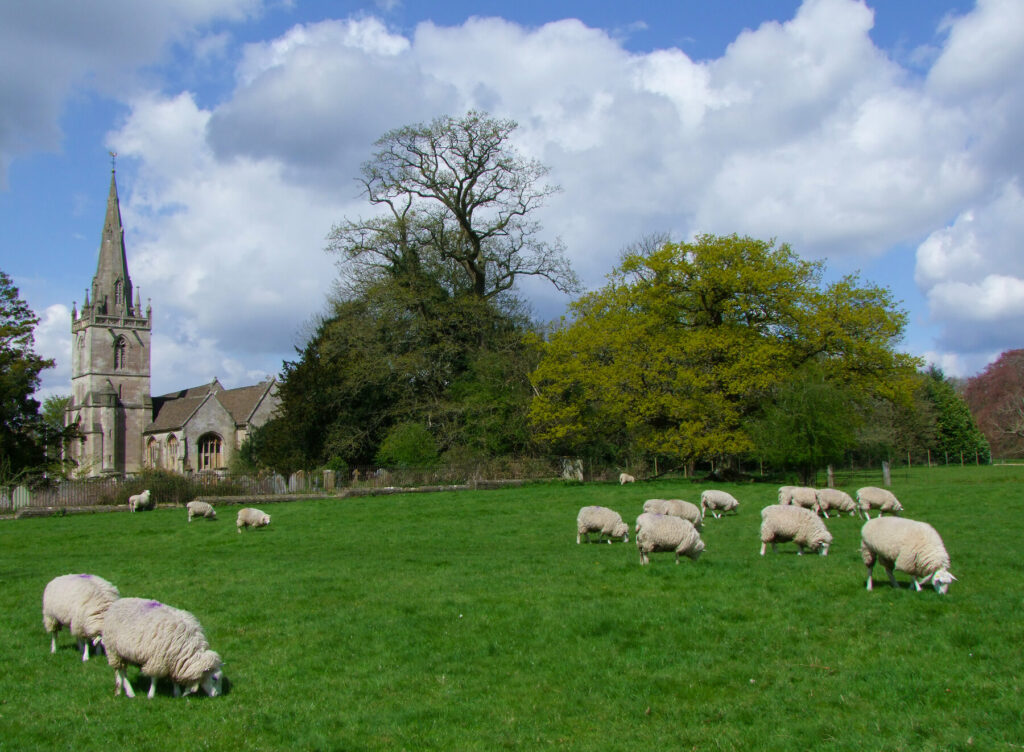
The Court houses a reputable collection of fine art, but it’s the landscape ‘art’ of Lancelot ‘Capability’ Brown and Humphry Repton that helps me walk off lunch. Abutting the town centre, the sheep-grazed meadows are a lovely place for a wander, with views of Corsham Court and its neighbouring church.
Bradford-on-Avon
By late afternoon I’m aboard the MV Barbara McLellan, a narrowboat run by the Kennet and Avon Canal Trust that takes visitors along the canal from Bradford-on-Avon. Strange as it sounds to have a canal in the hilly Cotswolds (there are two, including the gradually restored Cotswold Canal at Stroud) the Kennet and Avon Canal runs through the southernmost end of the AONB, along the Limpley Stoke Valley from Bradford-on-Avon to Bath.
My relaxing two-hour trip is soothingly therapeutic; the slow pace towards the Avoncliff Aqueduct provides a chance to get to know the contours of the Cotswolds, smothered here with bluebells and wild garlic.
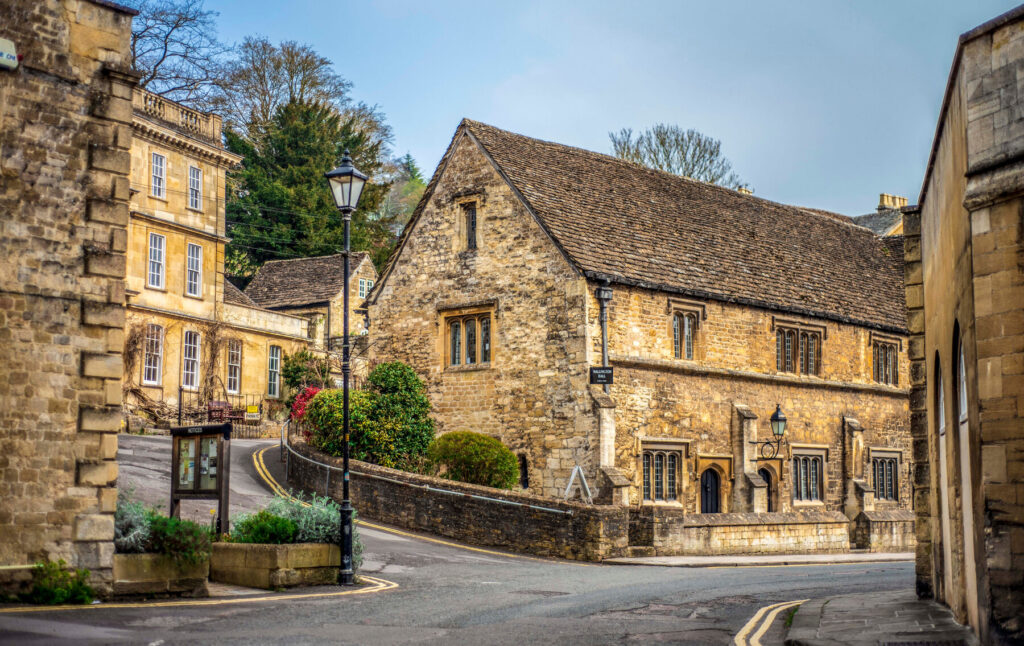
Bradford-on-Avon I consider one of the prettiest of Cotswold towns. Its industrial past – with former textile mills lining the banks of the Avon – prevents it from being overly twee. And the captivating collection of tightly knit houses on the valley slopes, from tiny gabled cottages to grand Georgian statements, into which is added the town’s vast 14th-century tithe barn and gorgeously diminutive Saxon church of St Lawrence, is a very pleasing mix. It’s quite a climb from the town centre and requires a few minutes of effort on foot, but there are fabulous views from the tiny pilgrimage of St Mary Tory.
Little Solsbury Hill
It’s an early start next morning to follow the Limpley Stoke Valley by road, cross into northeast Somerset and head for Little Solsbury Hill on the outskirts of Bath. Immortalised by Peter Gabriel in his song Solsbury Hill, the Iron Age hillfort takes advantage of the natural lie of the land and is an opportunity to see a tiny patch of the calcareous unimproved grassland, rich with wildlife both on the ground and in the air, for which the AONB is renowned.
The tiny lanes north of Little Solsbury Hill, from Batheaston to Marshfield and Cold Ashton are not suitable for motorhomes, but I urge anyone to park up and cycle these tiny lanes or walk the Limestone Link footpath that follows St Catherine’s Valley. These hills and valleys are some of the best secrets of the hidden Cotswolds, with the most contorted folds in the hills plastered with wildflowers. Tucked among them you’ll discover one of the most beautiful of Elizabethan houses, St Catherine’s Court, and the prettiest of Cotswold churches, ornamented inside with decorative tiles and mosaics.
With my walks at Solsbury Hill over, my next stop must be Marshfield Ice Cream on the Wiltshire/South Gloucestershire border. The farm’s ice-cream parlour is open over summer weekends, but prior arrangements can be made to purchase tubs direct from the farm during the week. It’s well worth the visit to sample the creamy delights and I chance upon some of the farm’s newborns.
Dyrham Park
I’m nearing the end of my trip around the southern Cotswolds, but I have one final stop to make – magnificent Dyrham Park, owned by The National Trust. To reach the house on foot from the car park, I venture out on the 45-minute Prospect Walk, which provides extensive views over the Severn Valley. I can even see the Brecon Beacons and Black Mountains in Wales.
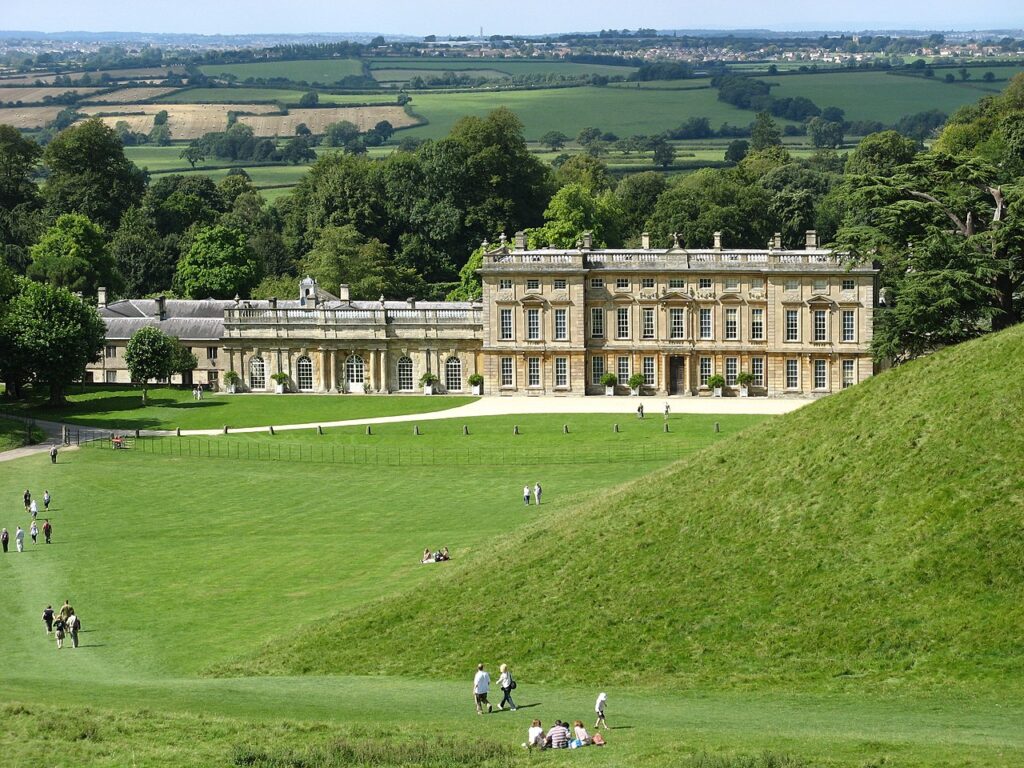
While there’s an interesting exhibition on the conservation work taking place in the house, the interior is a little disappointing with minimal viewing available. But the gardens ‘out back’ offer a bucolic spot to sit beneath the trees in the perry orchard or beside the pond. Amid the tulips and late-flowering daffodils, I can mull over all that I’ve seen of the southern Cotswolds in a long weekend – without once seeing a coach brimming with tourists.
Practicalities
Malmesbury is not easy for motorhomes (van conversions & campervans will get into the central car park in Cross Hayes). I recommend stopping overnight at Burton Hill, within 10mins’ walk of the town centre.
For Castle Combe, do not approach from the south by motorhome; the road is too narrow for vehicles to pass safely. Approach from the north (the B4039) where there is a large accessible car park. It’s a 700yd walk downhill into the village. There is no parking within the village. At Corsham, motorhomes may not park in the grounds of Corsham Court and therefore need to find roadside parking in town (of which there is plenty).
In Bradford-on-Avon, the best place for motorhomes to park is the Kennet & Avon Canal visitor car park south of the town. From here it is a 5min walk to the town centre. For Little Solsbury Hill & St Catherine’s Valley, motorhomes under 8ft 2in (2.5m) high can park in Batheaston, otherwise taller ‘vans should park at the northern end of Swainswick Ln or in Cold Ashton (both off the A46). Either way, anticipate multiple miles walking or cycling. At Dyrham Park, there’s a large parking area suitable for motorhomes.
More information
For more information, see Caroline Mills’s book:
